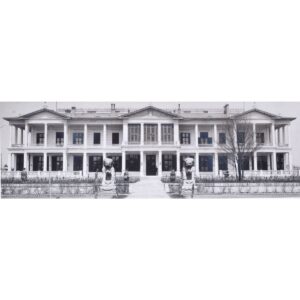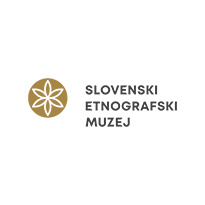Photography Access to the Yuanqiu Altarat the Temple of Heaven
A black-and-white photograph showing the entrance to the Yuanqiu Altar (Yuanqiutan 圜丘壇), which literally means “Circular Hill Altar”. The altar stands on a fenced area of several hectares in the southern part of the Temple of Heaven complex (Tiantan 天壇). It was built in 1420 by the Yongle Emperor (reigned 1402–1424). Here the emperors of the Ming and Qing dynasties performed the rites of heaven worship twice a year. At the site of the Yuanqiu Altar, on the day of the winter solstice, the emperor performed rituals of thanking heaven for its favours in the past year. Access to the Yuanqiu Altar, which is surrounded by double walls, is through pairs of three-part stone gates lingxing men 櫺星門. They stand on each side of the sky on the central north-south and east-west axes. In appearance, they resemble the pailou memorial arch 牌樓. From the time of Confucius, they were traditionally placed in front of temples. They were named after the ancient Chinese constellation, ... more
A black-and-white photograph showing the entrance to the Yuanqiu Altar (Yuanqiutan 圜丘壇), which literally means “Circular Hill Altar”. The altar stands on a fenced area of several hectares in the southern part of the Temple of Heaven complex (Tiantan 天壇). It was built in 1420 by the Yongle Emperor (reigned 1402–1424). Here the emperors of the Ming and Qing dynasties performed the rites of heaven worship twice a year. At the site of the Yuanqiu Altar, on the day of the winter solstice, the emperor performed rituals of thanking heaven for its favours in the past year. Access to the Yuanqiu Altar, which is surrounded by double walls, is through pairs of three-part stone gates lingxing men 櫺星門. They stand on each side of the sky on the central north-south and east-west axes. In appearance, they resemble the pailou memorial arch 牌樓. From the time of Confucius, they were traditionally placed in front of temples. They were named after the ancient Chinese constellation, belonging to the Virgo constellation, which was attributed to cultivation, literacy, and education. Each lingxing men passage is designated for a particular participant in the rituals. The central, largest passage is dedicated to the heaven, while the side passages are dedicated to the emperor and his entourage.
The entire area around the Yuanqiu Altar is only a few hectares in size and is part of the 273-hectare Temple of Heaven complex, now located in southeastern Beijing. The winter ritual for worshipping heaven was different from the summer ritual. The end of the period of abstinence in the Hall of Fasting (Zhaigong 齋宮) and the beginning of the sacrificial ceremony at the Yuanqiu altar was heralded by the ringing of the Gulou Bell Tower 鼓樓 at this site. The nine-part ritual included the rites of reporting and bowing to heaven, libation, sacrifice, and ritual music of zhonghe shaoyue 中和韶樂 with dance. The last emperor to bow to heaven in the Temple of Heaven was Yuan Shikai 袁世凱 (reigned 1915–1916), who for several months tried in vain to revive the monarchy. This marked the end of a centuries-old tradition. Today, the Temple of Heaven is on the UNESCO World Heritage List, as it is the largest religious complex in the world.
The photograph is the 180th of 449 photographs of Beijing and its surroundings in the album of Ivan Skušek Jr., purchased during his stay in Beijing (1914–1920). In the handwritten inventory of the album, the photograph is referred to as Himmels-Tempel: Hauptaltar – Zugang. (DZ, MV)



































Do you have a comment or additional information about the subject?